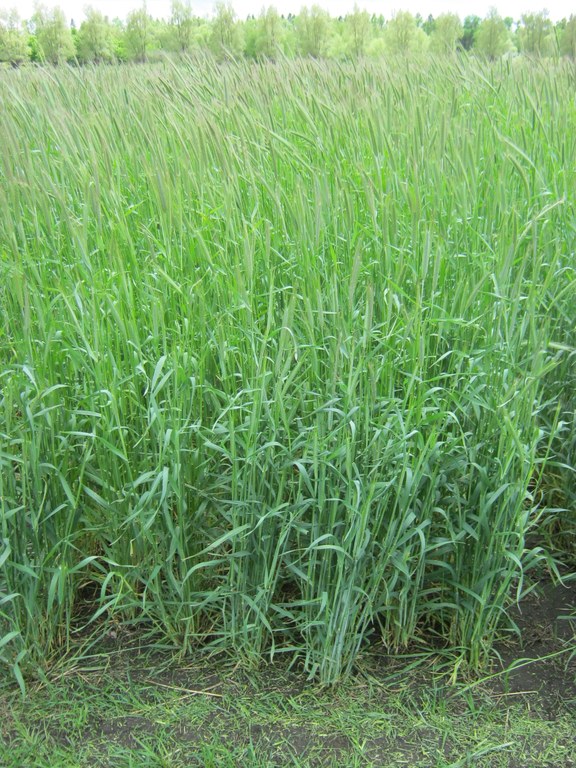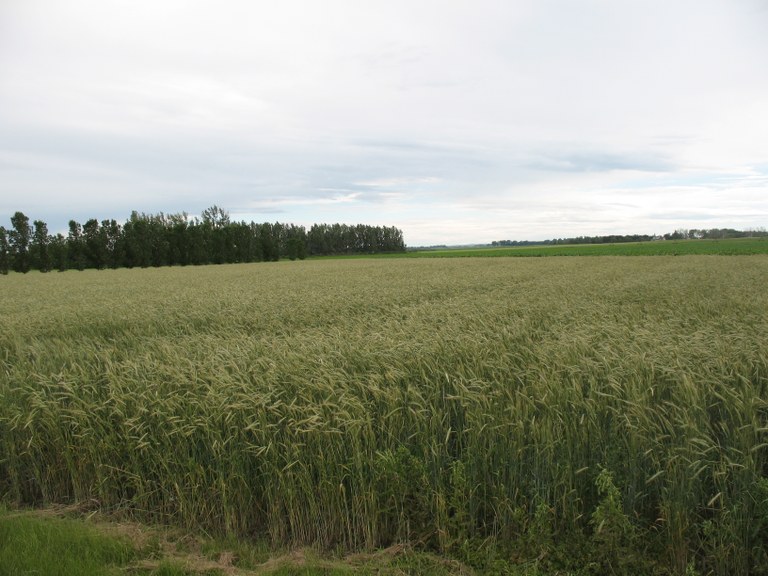Winter Rye Research at the CREC – Variety Development
Winter rye is the hardiest winter cereal crop and can be planted later in the fall than other winter cereals. Winter rye germinates and grows at very low temperatures, it is the earliest winter cereal to grow in the spring and to reach seed maturity. Winter rye tends to require less inputs to raise, competes excellent with weeds and performs well under low fertility or moisture conditions along with providing reliable cover for erosion control. These traits are the reasons for the increasing popularity of rye being used in the rotation as a grain, forage, or cover crop.
Currently, very little variety development is occurring as the crop is considered a minor crop. The majority of the varieties commercially available have been developed and released for a number of years, and in some instances have lost varietal identity or purity by not being grown in certified seed systems. The lack of certified seed production has made it difficult to source seed of a known variety.
The CREC agronomy program coordinates the NDSU state winter rye variety testing program along with a diverse research program using rye as a grain, forage and cover crop. The agronomy program has also been working on variety development, focusing on winter hardiness, early season vigor, grain yield and quality, biomass production, straw strength, and early maturity. The foundation seedstocks program at the CREC has the capability to increase breeder and foundation seed. This collaborative effort illustrates the ability of diverse programs within a department to develop, trial, increase, and distribute seed of released varieties to the public.
ND Dylan winter rye, developed by the CREC agronomy program was released this summer by the North Dakota Agricultural Experiment Station with seed distributed by the ND County Seed Increase Program this fall.

ND Dylan in 2016 organic variety trial.
ND Dylan is a high yielding winter rye variety that has good winter hardiness. Data gathered over multiple years indicate a yield advantage over current commercial varieties. It is a tall variety with good straw strength. ND Dylan is a medium-late variety, one day later than Rymin and five days earlier than Dacold. Test weight is equal to Rymin and better than Dacold. Seed weight is average, slightly higher than Dacold. Tested across 26 locations from 2006-2016, ND Dylan had a higher yield than Dacold, Hancock, Spooner, and Rymin.
Biomass data is limited, although data gathered indicates total dry matter yields of ND Dylan to be greater than Dacold and Rymin. Winter hardiness ratings and early season vigor scores demonstrate ND Dylan’s potential for use as a grain, forage or cover crop.
The renewed interest in winter rye for multiple use illustrates the need for a reliable source of adapted seed. Certified seed has not been grown in North Dakota for a number of years. The release of ND Dylan ensures seed of a known pedigree and seed source.
 Breeders seed field of ND Dylan in 2014.
Breeders seed field of ND Dylan in 2014.
General Characteristics of ND Dylan:
- High Yield
- Good winter hardiness
- Medium-late maturity
- Good straw strength
- Tall
The CREC will continue to evaluate and develop winter rye varieties. Current work includes the development of a very early maturing line. Along with early maturity, we are also selecting for winter hardiness, early vigor and early biomass development for use as a cover crop or double cropping.
Steve Zwinger
Agronomy Research Specialist


